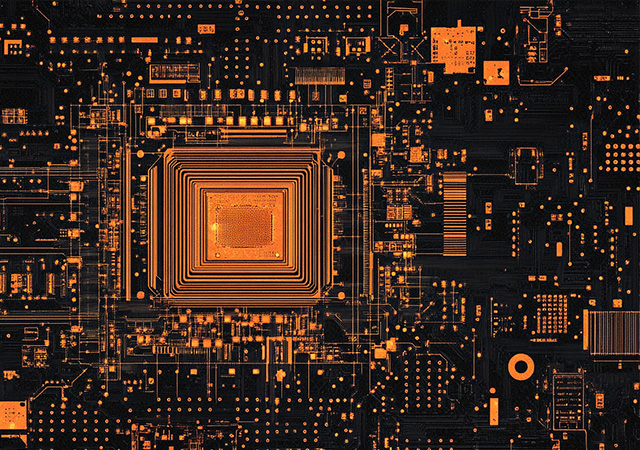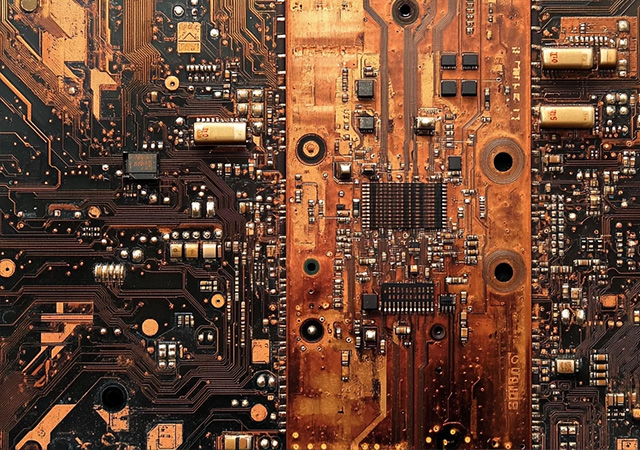-
- PCB TYPE
- PRINTED CIRCUIT BOARD PROTOTYPE ALUMINUM PRINTED CIRCUIT BOARD R&F PCB FPC HIGH FREQUENCY PCB HIGH-TG PCB HEAVY COPPER PCB HDI PCB PCB FOR LIGHTING METAL CORE PCB

CEM3 PCB has evolved into a versatile substrate that excels beyond its traditional mid-tier applications, particularly in high-frequency electronics and harsh operational environments. As industries like telecommunications, automotive, and industrial automation demand faster data transmission and greater resilience, CEM3 PCB has undergone material and design innovations to meet these needs. Unlike FR4, which dominates high-end high-frequency applications but at a premium cost, CEM3 PCB offers a cost-effective solution with sufficient signal integrity for frequencies up to several gigahertz. Additionally, its inherent robustness, when optimized, allows it to withstand extreme temperatures, moisture, and mechanical stress—making it a reliable choice for outdoor and industrial settings. This article explores CEM3 PCB’s role in high-frequency signal transmission, its adaptations for harsh environments, integration with additive manufacturing, and emerging applications that leverage its uni

low CTE CEM3 has become an indispensable material in the era of miniaturized electronics, where shrinking form factors and increasing power densities amplify the risks of thermal stress. As devices evolve to pack more functionality into smaller spaces—from wearable health monitors to compact industrial sensors—traditional substrates struggle to manage the thermal expansion mismatches that threaten reliability. low CTE CEM3 addresses this by minimizing dimensional changes across temperature fluctuations, acting as a stabilizing foundation for components that operate in tight proximity. Unlike standard CEM3, which can introduce stress through expansion, low CTE variants are engineered to align with the thermal behavior of adjacent materials, from copper traces to semiconductor chips. This article examines how low CTE CEM3 enables the next generation of miniaturized devices, its role in preventing thermal-induced failures, innovative testing approaches to validate its performance, and its

CEM3 PCB with Low Coefficient of Expansion (CTE) represents a critical advancement in substrate technology, addressing a longstanding challenge in electronics: thermal-induced stress. In environments where temperatures swing dramatically—from industrial factories to automotive engine bays—components and PCBs expand and contract at different rates, leading to solder joint fatigue, delamination, or even complete failure. Traditional CEM3, while reliable in stable conditions, exhibits a higher CTE that can compromise performance under thermal stress. By engineering CEM3 to have a lower CTE, manufacturers have created a substrate that minimizes dimensional changes, ensuring components remain securely bonded and aligned regardless of temperature fluctuations. This article examines the science behind low-CTE CEM3, its material innovations, manufacturing techniques, and applications in industries where thermal stability is non-negotiable.

Low CTE CEM3 Material for High Stability has emerged as a cornerstone in electronics design, where maintaining dimensional integrity under varying temperatures is critical to performance. Unlike standard CEM3, which undergoes noticeable expansion and contraction with thermal changes, low CTE variants are engineered to resist such dimensional shifts, providing a stable platform for components that demand precision alignment. This stability is not merely a matter of durability; it directly impacts the functionality of devices ranging from high-frequency communication systems to precision measurement tools, where even micrometer-level shifts can disrupt signal integrity or measurement accuracy. This article explores how low CTE CEM3 material achieves high stability, its unique mechanisms for resisting thermal stress, applications in precision-critical industries, and advancements that further enhance its performance.

CEM3 PCB has evolved beyond its traditional role as a mid-tier substrate, emerging as a linchpin in sustainable electronics and flexible device design. As the industry grapples with e-waste crises and the demand for adaptable form factors, CEM3’s unique composition—non-woven glass core, woven glass outer layers, and epoxy resin—positions it as a versatile solution that balances performance, cost, and environmental responsibility. Unlike high-cost FR4 or limited-life paper-based substrates, CEM3 offers a compelling blend of mechanical resilience and recyclability, making it a cornerstone of circular economy initiatives. This article explores CEM3 PCB’s role in sustainable manufacturing, its adaptability to flexible electronics, integration with smart production systems, and expanding applications in emerging tech sectors. By examining its eco-friendly attributes and design flexibility, we highlight how CEM3 is redefining the possibilities of mid-range substrates in a rapidly evolving in

Got project ready to assembly? Contact us: info@apollopcb.com



We're not around but we still want to hear from you! Leave us a note:

Leave Message to APOLLOPCB
